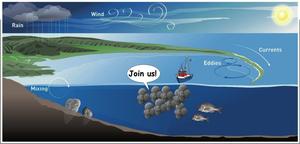Seeking a better life in plankton? Evolution and palaeoenvironmental implications of the thycopelagic habit in Foraminifera - Dott. Rocco Gennari

Seminari di geologia
Mercoledi 5 Dicembre 2018 alle ore 16.00 si svolgerà in aula Ruffini (Dipartimento di Scienze della Terra, via Valperga Caluso 35) il seminario dal titolo:
Seeking a better life in plankton?
Evolution and palaeoenvironmental implications of the thycopelagic habit in Foraminifera
Dr. Rocco Gennari
(Dipartimento di Scienze della Terra, Torino)
Foraminfera is a well-known microfossil and extant group of protists adapted to live in marginal environment and on the seafloor, as epi- or endobenthos, and in the epi- to mesopelagic environment as plankton. Its use in biostratigraphy and, as a consequence, its taxonomy were promoted by the hydrocarbon exploration in the early part of the XX century. Since then, the abundance and global distribution of foraminfera made them one of the best palaeoenvironmental and paleoceanographic proxies used, not only in geology, but also in environmental science. Such applications required an extensive improvement of the knowledge of the biology of foraminifers, including their evolution.
Foraminifers first exploited the benthic realm in the late Neoproterozoic. Traditionally, planktic foraminifera were considered a monophyletic group evolving from benthonic during the Late Triassic/Early Jurassic. The recent discovery of the thycopelagic lifestyle (living and growing both as benthos and plankton) of Bolivina/Streptochilus allows to shed light on the possible polyphyletic evolution of planktic foraminifera from different benthic ancestors during the multiple environmental crisis that punctuated the geological history (K/P boundary, OAEs, etc.). The thycopelagic lifestyle is a long term important evolutionary mechanism, but has shorter-term important implications in palaeoenvironmental and paleogeographic reconstructions. In fact, Bolivina/Streptochilus is commonly found in brackish basins when a short or ephemeral marine connection or condition is established, as repetitively happened in the Mediterranean-Paratethys area during the Miocene.





